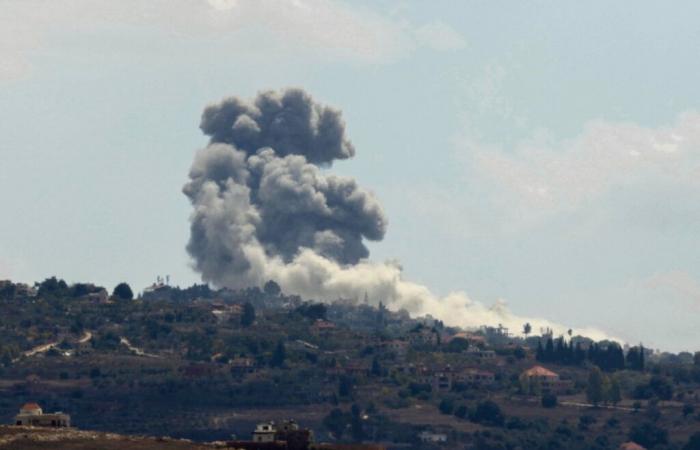
For several days, Benjamin Netanyahu has not hidden his desire to open a new front. Under the pretext of allowing the inhabitants of northern Israel to return home after multiple exchanges of fire between the army and the Lebanese Hezbollah, the political security cabinet had decided on a “War Aims Update”.
On Tuesday night, the incredible happened, which could well decide the fate of the Middle East region. Hundreds of pagers (a paging system widely used by Hezbollah to protect its communications by avoiding the Internet) exploded at the same time.
“At least nine people were killed and nearly 2,800 others injured”according to Lebanese Health Minister Firas Abiad. Several Hezbollah fighters were killed, as well as children. Among those injured was Iran’s ambassador to Lebanon.
“The pagers recently imported by Hezbollah”
A Source close to the movement told AFP that “The beepers that exploded are from a shipment of 1,000 devices recently imported by Hezbollah” which seem to have been “hacked at the Source”The Shiite movement claimed that Israel was “fully responsible” of these explosions and assured that he would “receive his just punishment” following “this criminal aggression”.
Israel has not commented, but who else would be susceptible to such action? Geolocation disruption is known to be one of the many forms of the ongoing war. Since October, Beirut residents have regularly noticed disruptions in their geolocation information, particularly on Google Maps.
Freddy Khoueiry, a security analyst for the Middle East region at Rane Network, explained to AFP how “Israel uses GPS jamming primarily to disrupt or interfere with Hezbollah’s communications”According to him, Israel also uses “GPS spoofing technology, which is another tactic used to send false GPS signals, in order to (…) disrupt the use of drones and precision-guided missiles”which Hezbollah uses to attack Israel.
Moreover, concerned about the impact of interference on air navigation, the Lebanese government filed a complaint with the UN Security Council on March 22. It denounces “Israel’s attacks on Lebanese sovereignty by disrupting navigation systems and civil aviation security” in Lebanese airspace.
If there were any doubts about his real desire for peace, Benjamin Netanyahu has dispelled them. The chances of an agreement on a ceasefire, considered within reach by Joe Biden, were already drifting with Israeli claims to maintain troops in the Philadelphia Corridor, this strip of land located along the border between Egypt and the Gaza Strip. What happened Tuesday evening in Lebanon is very likely to herald a new war. Israel is increasing the pressure to tip the entire region into war.
The 1er April, Israel targeted Iran’s consular area in Damascus, killing General Zahedi, the Iranian Revolutionary Guards’ representative in Syria and Lebanon. On July 30, one of the founders of Lebanese Hezbollah, Fouad Chokor, was killed in the suburbs of Beirut. Finally, the following day, Ismail Haniyeh, the leader of Hamas, engaged in indirect negotiations with Israel, was assassinated in Tehran, most likely by or on the orders of the Israelis.
“The possibility of an agreement is fading as Hezbollah continues to support Hamas”Israeli Defense Minister Yoav Gallant told U.S. envoy Amos Hochstein on Monday, September 16, who was visiting Israel. He went even further, telling his interlocutor: “Military action” against Hezbollah is “the only way to ensure the return of the people of northern Israel to their homes”.
Netanyahu is pulling out all the stops to set the Near and Middle East ablaze
Yet two days earlier, Hezbollah’s number two, Naim Qassem, stressed that his group had not “No intention of going to war (but) if Israel starts a war, we will face it and the losses will be enormous for us as well as for them”.
The new leader of Hamas, Yahya Sinwar, whom Israel has still not found after eleven months of war, assured for his part that the Palestinian Islamist movement was ” prepared “ has “to wage a long war of attrition” against Israeli forces in the Gaza Strip.
If the Middle East flares up, the Israeli prime minister is assured of American support. A way for Netanyahu to revive ties with Washington while tensions are perceptible in the negotiation of a ceasefire.
But, as Hani Al Masri, director of Masarat, the Palestinian Center for Policy Research and Strategic Studies, points out: “The current US administration does not want a regional war now, even with only Lebanese resistance, on the eve of the US presidential elections. These are experiencing intense competition, and any war will affect Kamala Harris’ chances of victory. Because it will lead to a rise in prices and inflation, and this factor strongly affects the decision of the American voter.”
The researcher also notes that “Iran does not want a regional war. Because it realizes that it advances better in the region without war or with a war of attrition and nothing more, especially since the United States and NATO will enter the war on the side of the occupier, which means that the balance of power will be unbalanced.”.
We can better understand why Netanyahu is pulling out all the stops to set the Near and Middle East ablaze in a conflict that could turn out to be global.
Before we go, one last thing…
Unlike 90% of French media today, Humanity does not depend on large groups or billionaires. This means that:
- we bring you unbiased, uncompromising information. But also that
- we don’t have not have the financial resources that other media outlets enjoy.
Independent and quality information has a cost. Pay it.
I want to know more





